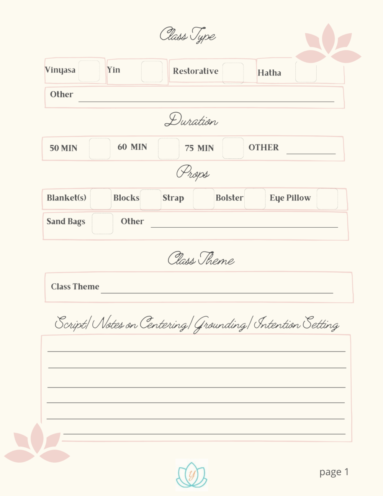I must admit, when I decided to teach the Yamas (restraints) and the Niyamas (observances) – the first two limbs of yoga in Patanjali’s eight-limbed path, there was a bit of uncertainty on my part. I recalled my 200 hour YTT (yoga teacher training) and first being introduced to the eight limbs. How foreign and impractical most of the Yamas seemed to me at the time (Brahmacharya – celibacy – really?!). It didn’t help knowing that this knowledge was thousands of years old, and the readings were interpretations of Sanskrit teachings from ancient times.
Asana (postures), Pranayama (breath control), Dharana (concentration), and Dhyana (meditation), seemed relevant in a western-world yoga class. As a new teacher, however, was I comfortable imparting the interpreted wisdom of the Yamas, Niyamas, Pratyahara, and Samadhi during a class? Absolutely not.
First, this was all new to me and it took a while to digest and assimilate this knowledge. Second, it didn’t feel relatable enough for me to practice myself, let alone teach others how to practice these limbs. And, that was fine, really.
As a new teacher, I was getting my legs under me (no pun intended). There was so much new territory to work through and teaching these deeper, esoteric limbs didn’t have to be a priority. I was, however intrigued with the Yamas and Niyamas, specifically, which can be thought of as guidelines to live a purposeful life. I wanted to learn more in order to integrate these limbs into my own deepening practice.
Over time, I read, researched, learned more, and began practicing the Yamas and Niyamas according to my own interpretations. Eventually, I felt comfortable discussing the subject, and that’s when I knew I could comfortably teach them to my students.
When teaching any of the spiritual aspects of yoga, it’s important to do so sparingly. Remember how foreign some of these concepts sounded to you the first time you heard them? While we love to feel that our students are open to learning this ancient knowledge (and there is no doubt that some are), some just may not be as ready. Therefore, it might be wise to sprinkle it in here and there, and introduce the not so familiar limbs gradually, taking care to explain some of the foundational knowledge first. Defining Patanjali’s eight-limbed path to yoga, to give what you are teaching context, is critical.
The following is an introduction of how I presented the Yamas the first time through. I took some notes and will probably refine it as I continue to teach them a second, third time, etc. Like everything else, teaching is a practice as well. As teachers, we are always evolving, trying new things, seeing what feels authentic to us and most importantly how well the students receive the information and how it may enhance their practice.
AHIMSA – NON-HARMING
Ahimsa, the first of the Yamas is a foundational principle that weaves its way into all other yoga philosophy. Its literal meaning is “non-violence” and is often translated to mean “do no harm.” The ancient texts teach that all living beings hold a spark of the Divine within, and by harming another being you are also harming yourself. Practicing Ahimsa is a way of life, which gives us pause to think about our actions and the impact they have on all living beings. Our words and thoughts, as well as our actions, can cause harm. Ahimsa is respect for all living beings, including yourself.
We can practice Ahimsa during our yoga practice and beyond the mat, by cultivating positive thoughts, choosing acceptance, happiness, and treating ourselves and others with loving kindness and compassion.
SATYA – TRUTHFULNESS
Although thinking of the word truthfulness we first think of being honest in our words and not telling lies, there is much more to this Yama. Satya has to do with being true to yourself, and to others in your words AND actions. Being honest this way can make life much easier. If we are our authentic selves and honest to others there is less guilt related stress involved to cover-up how we really feel and who we really are inside. At the same time, Ahimsa comes into play. We must not hurt others with our truthfulness. Truth is not always an easy choice and sometimes there is a cost.
During our practice, we can ask ourselves what price we are willing to pay for living as our authentic selves. We can connect deep to our true selves, being honest throughout our practice. Doing no harm to ourselves and knowing our strengths and limitations. Knowing what feels right, what feels real and true.
ASTEYA – NON-STEALING
We learned not to steal from a young age. But, we learned about not taking material possessions. What about stealing other people’s happiness, time, or peace? What about stealing from ourselves? Do we steal from our own happiness when we don’t live our truth – Satya? Balance is key.
Do we steal from ourselves by giving too much? By not practicing Ahimsa or Satya and treating ourselves with compassion and living our truth, we are indeed.
We can practice Asteya, by not allowing others to steal our time from us on the mat. Allowing ourselves to be present in the moment. This is our time, our practice, our time for self-care, peace, and relaxation. We can focus on ourselves and choose to let everything else melt away for now. Giving ourselves permission to practice Asteya for ourselves in this moment.
BRAHMACHARYA – NON-EXCESS
Brahmacharya refers to the “right use of energy,” in other words, how we conserve and direct our energy. We are encouraged to regulate our energy related to external desires and to instead learn to find contentment within ourselves. For example, it’s okay to indulge in some wants – like an attractive new pair of shoes – but don’t fill your closet with unnecessary possessions you’ll probably never use. It’s okay to have that delicious dessert on occasion – but not at every meal. In other words: moderation is key.
We can translate this into our practice by giving some thought to how we direct our energy on and off the mat. Are there times we overindulge? Are we able to regulate our energy and direct it inward? Can we find peace and contentment, there, inside? Can we remind ourselves that less is more and live in peace? “The secret of happiness is not found in seeking more, but in developing the capacity to enjoy having less.” ~ Unknown
APARIGRAHA – NON-POSSESSIVENESS
Aparigraha can be interpreted as non-attachment. The ancient yoga texts teach that living a life of equanimity (even mindedness) – keeps us from attachment to end results. Instead, we are to focus on our effort in the moment and not necessarily the future outcome.
When we attach to expectations, are we setting ourselves up for disappointment? Non-attachment does not mean we don’t care; It frees us up to be immersed in each moment of life and in one another.
Think of the physical stuff we cling to and how it becomes a burden over time. How do we maintain it? Where do we store it? How do we let it go? Clutter in our minds becomes a source of stress too, taking up space that is needed for us to expand and grow.
During our practice we can think about and feel how much “stuff” we are holding on to. We can learn to release what is no longer serving us. We can give ourselves permission to let go and make space. Leading a life of equanimity and non-attachment can lead us to freedom from suffering.
As I wrap-up my first teachings of the Yamas, I too have deepened my understanding of how to incorporate these meaningful principles into my life.
I hope this post has given you relatable knowledge and helps you to feel more prepared to share these concepts with YOUR students. If you want to learn more, see the resources below. Read Teaching the Niymas Naturally next!
Resources:
The Yoga Sutras of Patanjali Translation and Commentary by Sri Swami Satchidananda
The Yamas and Niymas by Deborah Adele
https://kripalu.org/resources/yoga-s-ethical-guide-living-yamas-and-niyamas
https://www.ekhartyoga.com/articles/philosophy/the-yamas-and-niyamas





